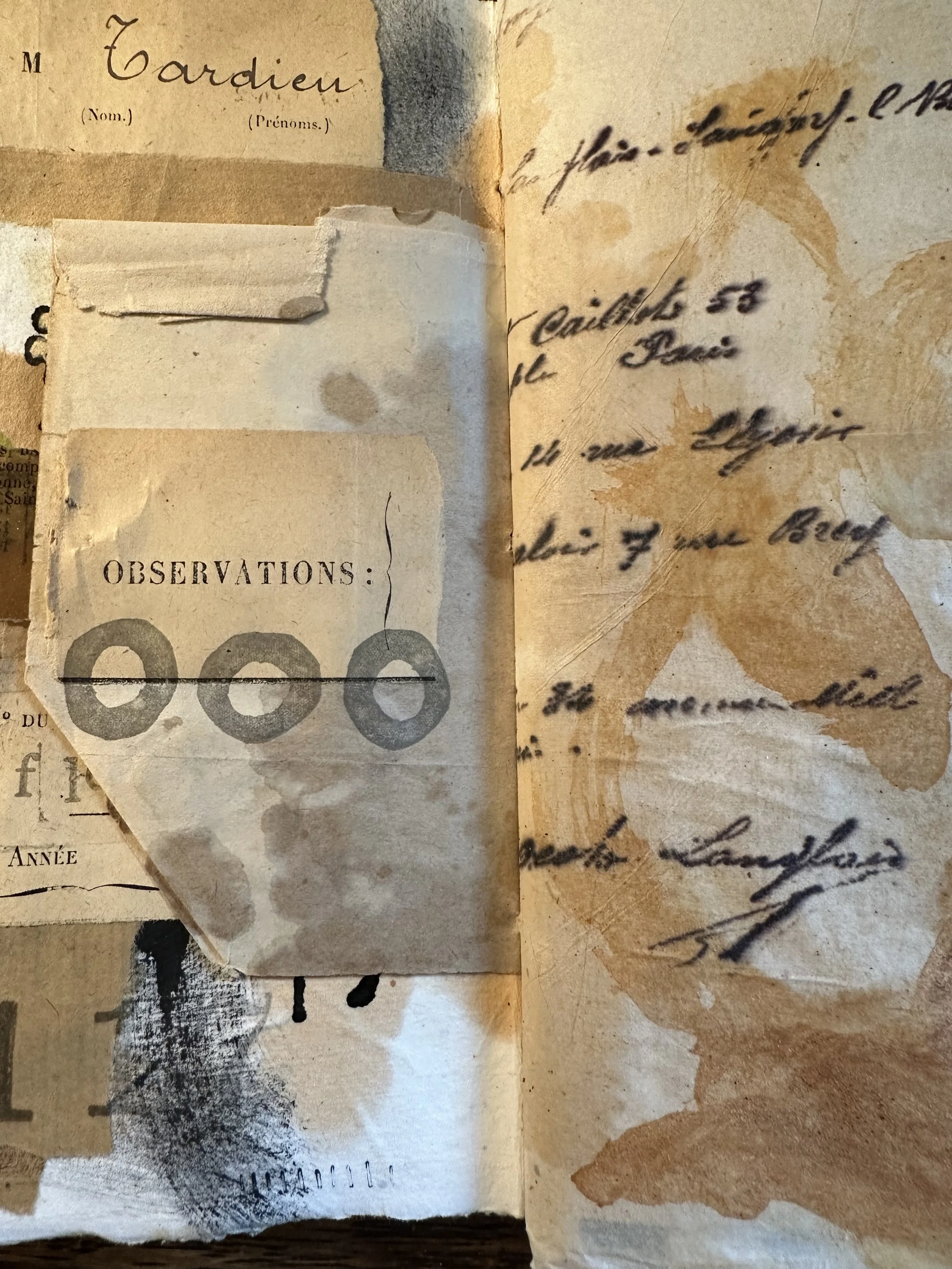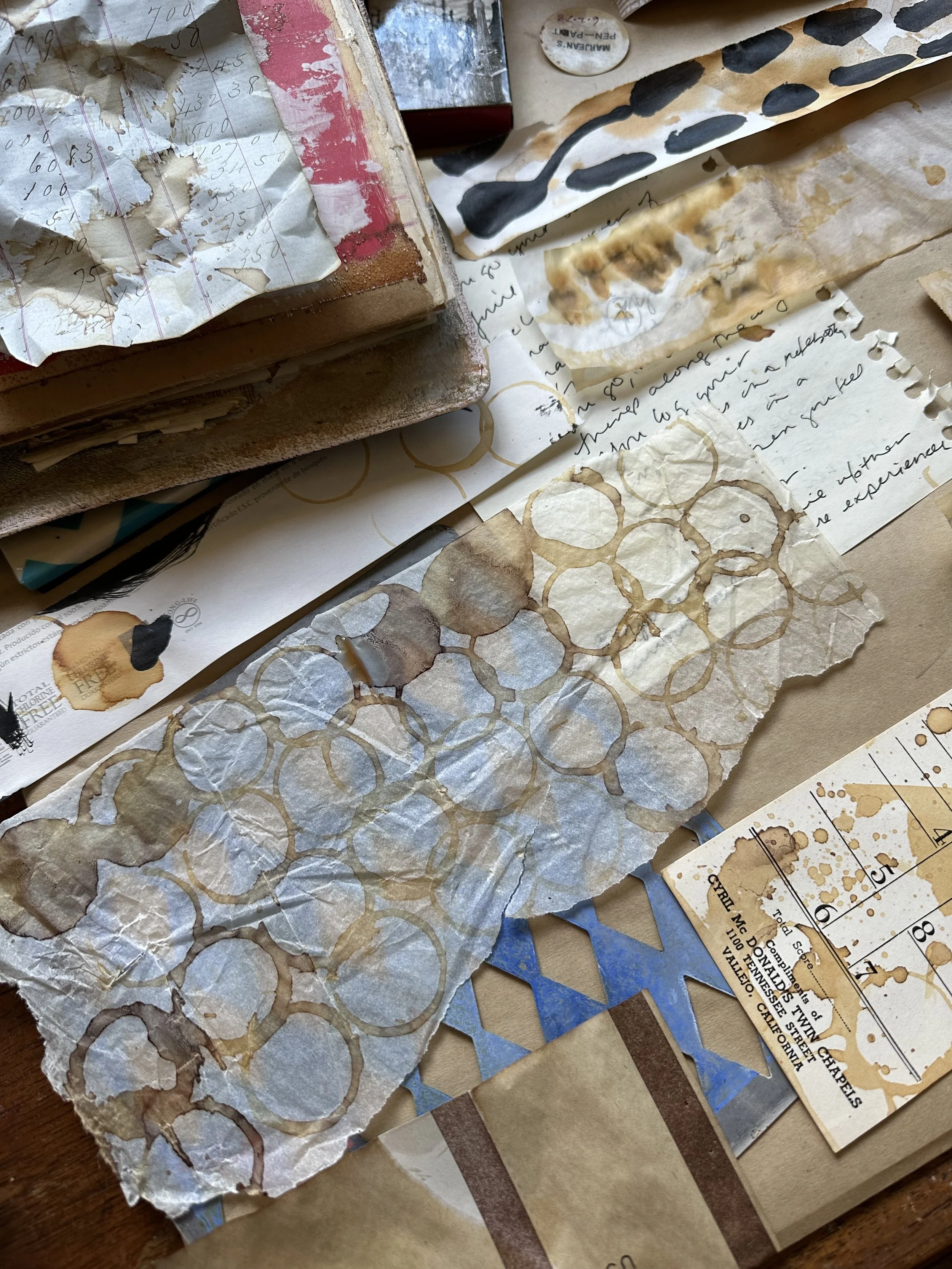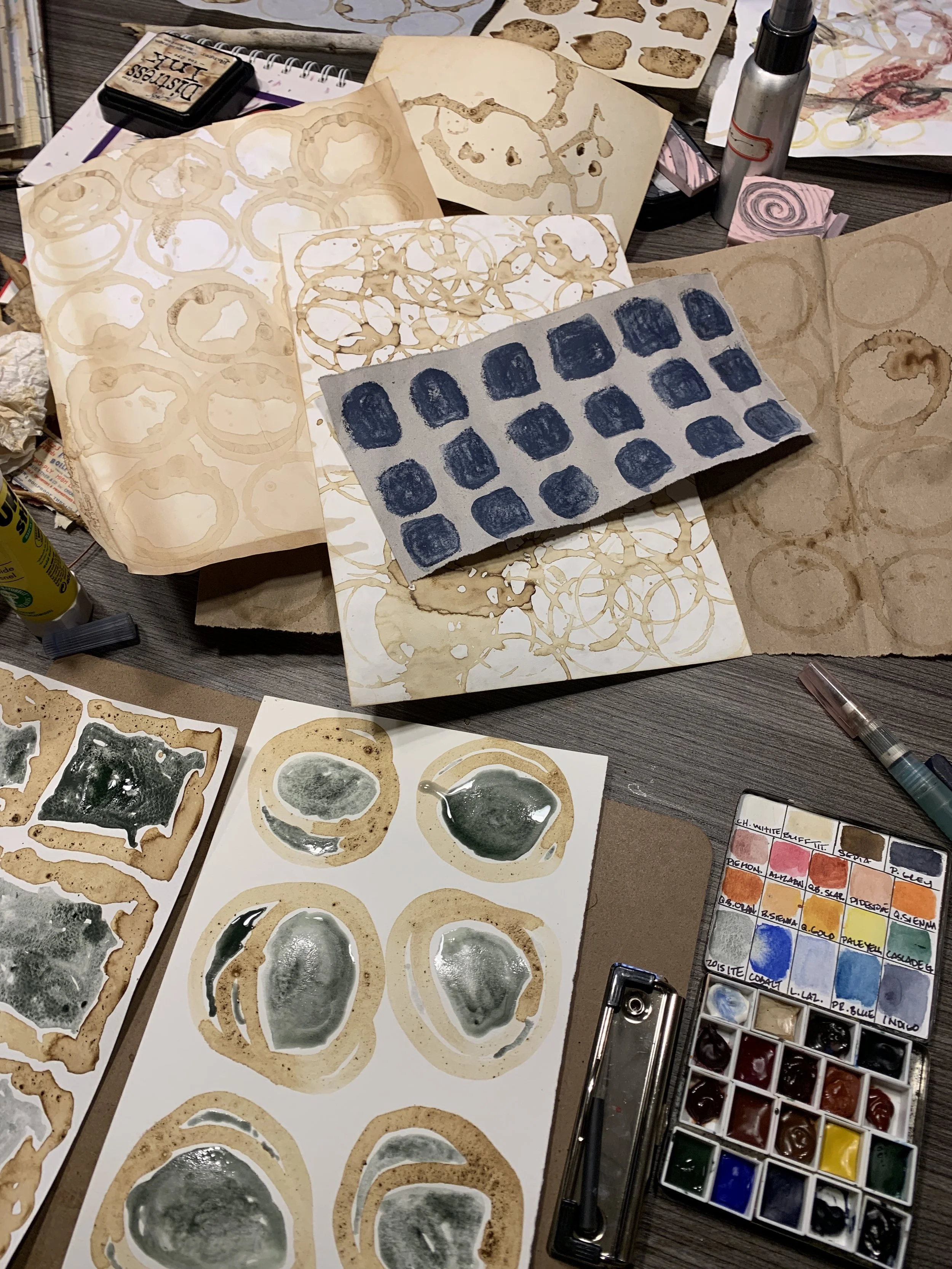Marks & Meaning
Brushstroke Poetry
Developing Your Visual Language Through Mark Making
In the world of art journaling, there’s a quiet kind of magic in the marks we make—those personal gestures that dance across a page, whispering fragments of our stories without ever needing words. Whether it's a splatter of ink, a scratch of pencil, or the gentle press of a handmade stamp, these marks are more than decoration. They’re the beginnings of a visual language—one as unique as your fingerprint.
What Is Mark Making?
Mark making is the intentional act of leaving a visual trace on a surface. In the context of art journaling, it becomes a deeply personal practice—part ritual, part exploration. It’s not about perfection; it’s about expression. Think of it as your artistic accent, the visual dialect through which your creative spirit speaks.
Your marks might be wild and gestural or soft and rhythmic. They might echo the energy of a moment or the calm of a slow afternoon. Over time, these repeated gestures become a vocabulary—your own brushstroke poetry.
Making Your Own Collage Papers
One of the most joyful ways to explore mark making is by creating your own collage papers. These become the layered foundation of your journal spreads, carrying your visual language into each composition.
Here are a few ideas to begin:
Start with Curated Surfaces
Choose papers that already have a story. Vintage book pages, sheet music, old letters, handmade papers, even packaging scraps—all of these hold history and texture. Adding your marks layers your voice onto theirs, creating a beautiful interplay of past and present.
Play with Pattern and Texture
Use tools you have on hand:
A wine cork dipped in paint makes a wonderful circular stamp.
The edge of a credit card creates satisfying, linear scrapes.
A piece of lace or mesh pressed into ink can form a ghostly grid.
Let yourself experiment—these patterns don’t need to be perfect. Their beauty is in their authenticity.
Try a Variety of Mark Making Tools
Stains from tea or coffee or wine
Splattered ink or watercolor
Hand-carved stamps
Pencil doodles or cross-hatching
Dry brush streaks
Each of these adds nuance to your papers. Try layering wet and dry marks for depth and movement.
Work Across Transparencies
Tracing paper, vellum, and tissue-thin book pages allow you to create ethereal overlays. Your marks show through in ghostlike layers, inviting curiosity and interpretation.
Creating Your Visual Language
As you continue making marks, you’ll notice preferences and patterns emerge—certain shapes you return to, colors that speak to you, a rhythm in the way you apply paint or ink. These elements begin to define your style. Trust them. Lean into them.
This is the beginning of your visual language—a unique system of symbols, gestures, and textures that capture your mood, your memories, your creative fingerprint. The more you use it, the stronger it becomes.
A Gentle Invitation
I want to invite you to gather a handful of papers—vintage scraps, packaging, drawing paper, anything you love the feel of. Choose three tools (a brush, a stamp, your fingers!) and three colors. Don’t overthink—just begin. Let your marks tell their story.
And remember: in art journaling, there are no mistakes—only layers.





